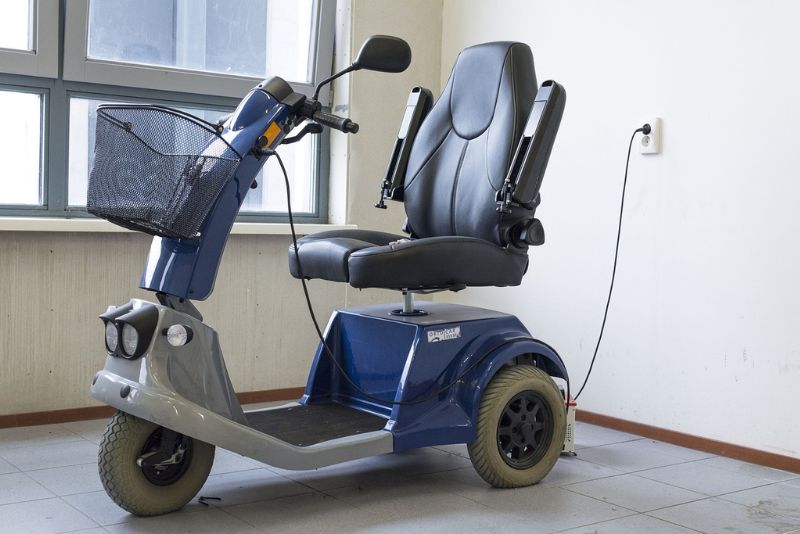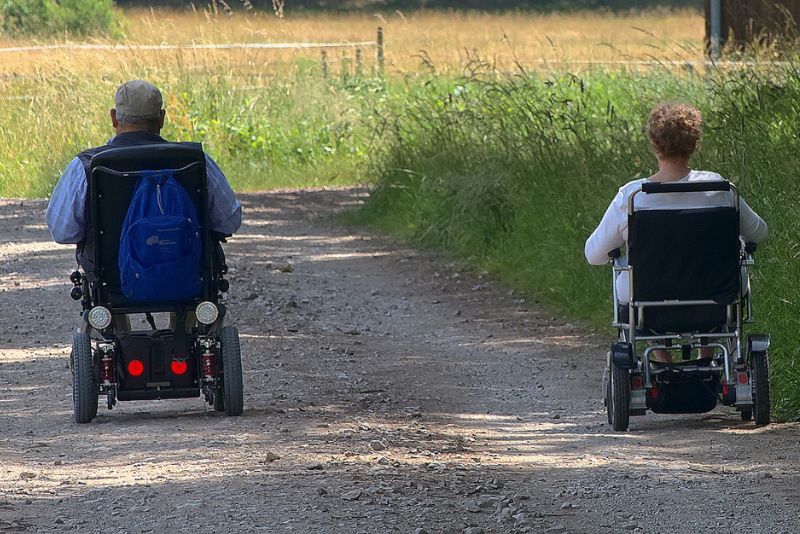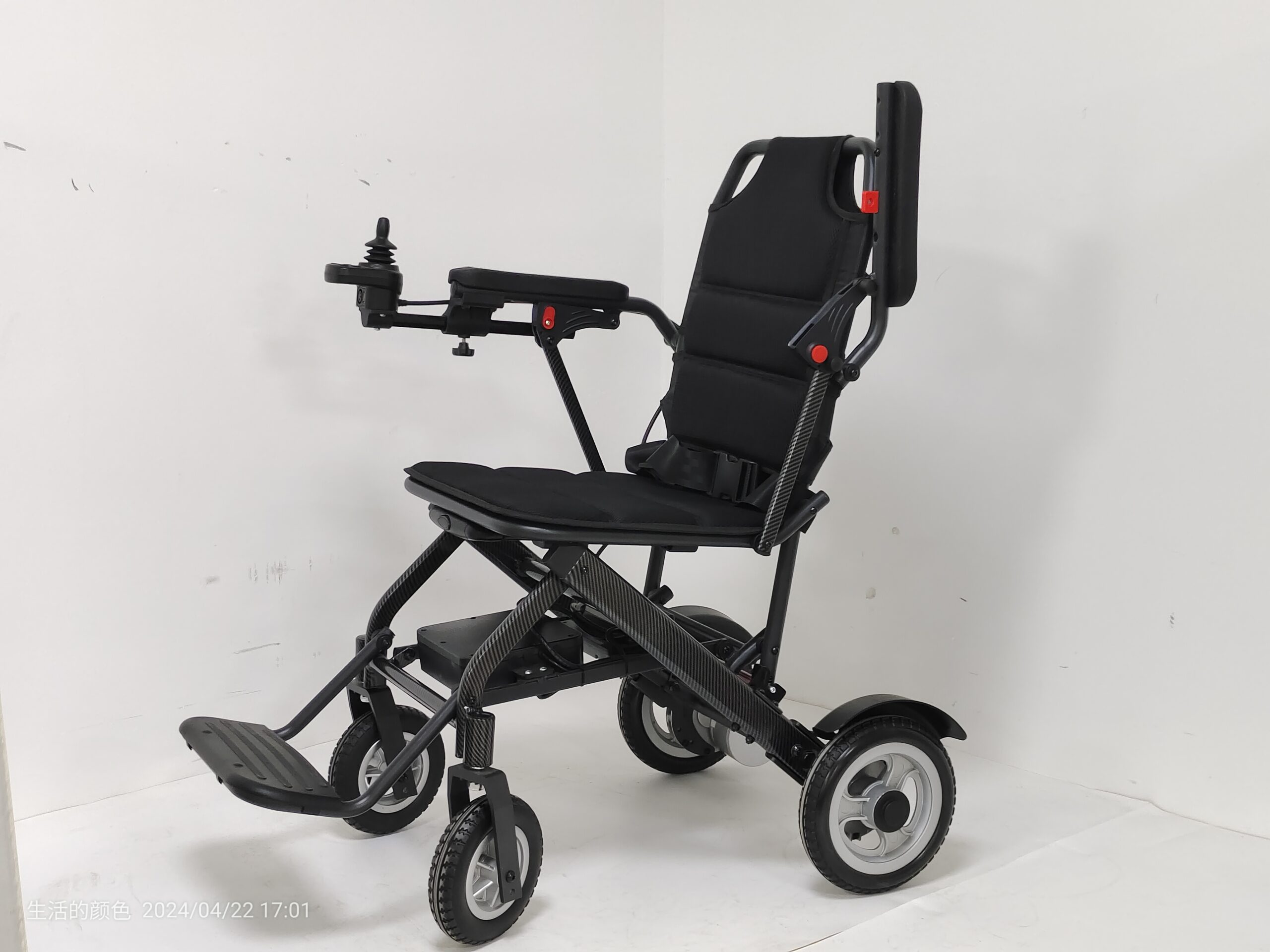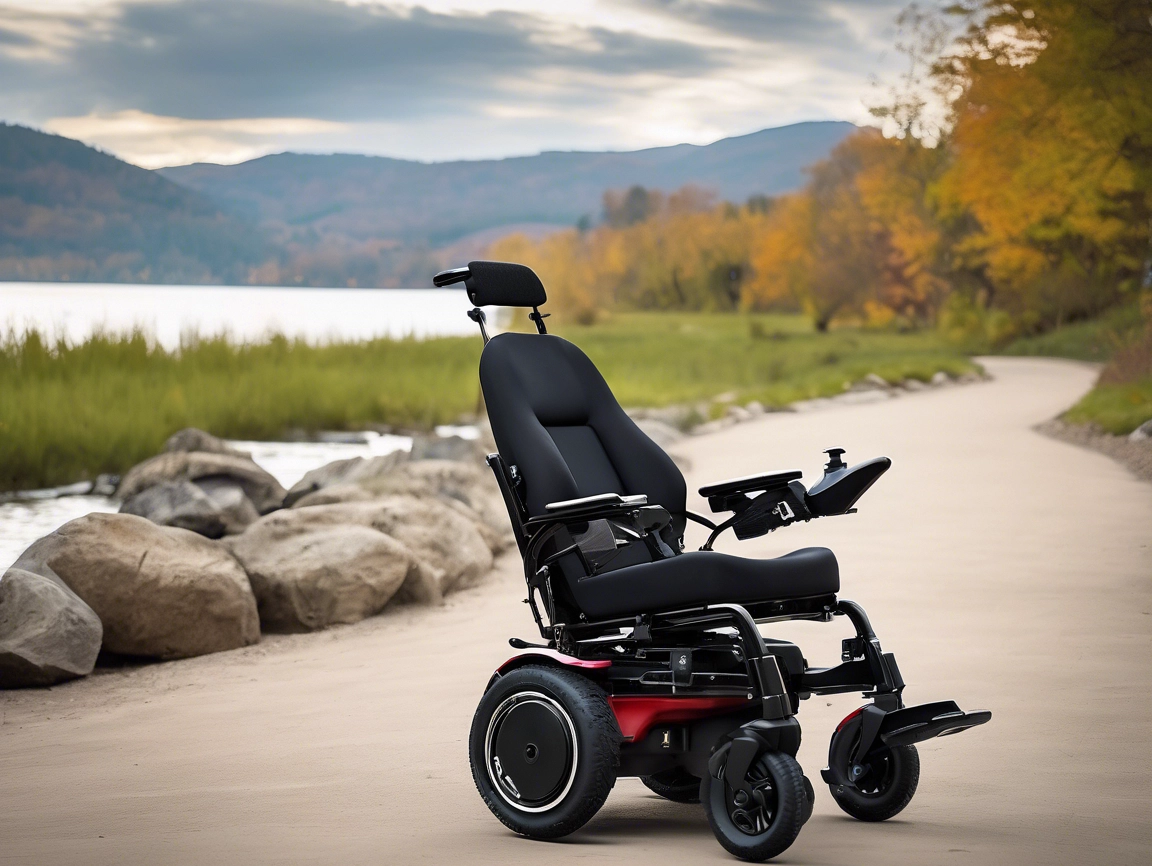Electric wheelchairs and mobility scooters are both designed to enhance mobility for individuals who have difficulty walking or standing for extended periods. They may seem similar at first glance. However, there are several key differences between these two types of mobility aids in terms of design, functionality, and usage. This article reveals the distinctions between electric wheelchairs and mobility scooters to help you understand which mobility option may be most suitable for your specific needs.
Design and Construction
Electric Wheelchairs
An electric wheelchair is characterized by a compact, sturdy frame built close to the ground. The motorized wheels are directly attached to the frame. They provide a stable and well-balanced design. The wheelchair’s seat is an integrated part of the frame that ensures a secure and comfortable seating position. Electric wheelchairs are engineered to handle various terrains, both indoor and outdoor, making them versatile mobility solutions.
Electric wheelchairs are designed to be extremely maneuverable. They allow users to navigate through tight spaces and crowded areas with ease. The small footprint and precise steering controls make power chairs ideal for both home and community use.
Mobility Scooters
Mobility scooters, on the other hand, feature a larger frame with a tiller-based steering system. It is similar to that of a bicycle or a lawnmower. The motor is connected to the vehicle’s rear wheels, providing power and propulsion. The seat is separate from the frame and can often swivel for easy access and adjustment.
Mobility scooters are fundamentally designed for outdoor use on smooth, paved surfaces such as sidewalks, parking lots, and flat, even pathways. Their larger size and wider turning radius make them less suitable for tight indoor spaces or areas with significant obstacles.

Functionality and Control
Electric Wheelchairs
Electric wheelchairs are equipped with a joystick or other hand-control system that allows for precise steering and maneuverability. Users can navigate through narrow doorways, make tight turns, and position themselves accurately with the help of these intuitive control systems.
One of the top-notch advantages of electric wheelchairs is their ability to elevate or recline the seat. This feature allows users to adjust their seating position for comfort, visibility, and improved accessibility in various settings.
Electric wheelchairs are designed to handle inclines, curbs, and uneven terrain with relative ease. Their sturdy construction and powerful motors enable them to navigate obstacles and navigate through a variety of environments.
Mobility Scooters
Mobility scooters are controlled using a tiller-based steering system, similar to that of a bicycle or a lawnmower. While this steering method is familiar to many users, it does not offer the same level of precision and agility as the joystick controls found on electric wheelchairs.
Mobility scooters are generally less maneuverable in tight spaces. This is due to their larger footprint and turning radius. Such electric scooters are best suited for smooth and flat surfaces. But they may struggle with navigating inclines, curbs, or uneven terrain.
Seating adjustments on mobility scooters are limited, and users typically cannot elevate the seat to facilitate access or visibility in the same way as an electric wheelchair.
Usage Considerations
Electric wheelchairs are versatile mobility aids that can be used both indoors and outdoors. Their compact size and maneuverability make this mobility device well-suited for home use. Users can flawlessly navigate through tight spaces and around furniture with ease. The chair’s ability to handle various terrains means they can be used for outdoor activities as well as travel within the community.
Mobility scooters are primarily designed for outdoor, local travel. Their larger size and limited agility make them better suited for use on smooth, paved surfaces. These can be sidewalks, parking lots, and outdoor shopping areas. While some mobility scooters can handle light obstacles, they are generally not recommended for indoor use or for navigating environments with significant obstacles or uneven terrain.
Portability and Transport
Electric wheelchairs can generally fit in most vehicles with the proper equipment, such as a wheelchair lift or ramp. Many models are designed to be disassembled into smaller components, making them easier to transport. However, electric wheelchairs can still be heavy and bulky, requiring adequate storage space in the vehicle.
Mobility scooters, due to their larger size and weight, can be more challenging to transport. While some models are designed to be disassembled, the process can be more involved. The individual components may still be too heavy or bulky for some users to manage independently. Specialized equipment, such as a lift or ramp, may also be required to load and unload a mobility scooter into a vehicle.
Cost and Insurance Coverage
Electric wheelchairs tend to be more pricey than mobility scooters, with prices ranging from a few thousand dollars to ten thousand dollars. The price tag depends on the features and customization required. However, the higher cost of electric chairs is often justified by their advanced functionality, durability, and ability to accommodate a wider range of mobility needs.
Mobility scooters are generally less costly than electric wheelchairs. The prices range from a few hundred dollars for basic scooter models to several thousand dollars for more advanced options. While they may be more affordable, mobility scooters may not offer the same level of functionality or versatility as electric wheelchairs.
Insurance coverage for both electric wheelchairs and mobility scooters can vary significantly based on individual needs, medical requirements, and insurance policies. You should consult with your healthcare provider and mobility specialists to evaluate your specific needs and determine the most appropriate mobility aid. Insurance companies often require documentation of medical necessity and may have specific criteria for coverage of mobility equipment.

Electric Wheelchair vs Mobility Scooter – Which One to Choose?
Electric wheelchairs are typically the preferred choice for individuals with more significant mobility limitations or those who require a high level of support and stability. They provide a secure seating position, precise control, and the ability to navigate through various environments. Such features make power chairs ideal for users who have limited or no ability to walk.
Mobility scooters are often better suited for those who have some mobility and are able to walk short distances. They provide a convenient mode of transportation for local travel. Scooters can be a solid option for individuals who require mobility assistance but do not need the level of support and functionality offered by an electric wheelchair.
Conclusion
Electric wheelchairs and mobility scooters serve as valuable mobility aids, but they differ significantly in terms of design, functionality, and usage. Power wheelchairs offer a compact, sturdy frame with precise control, allowing users to navigate through various indoor and outdoor environments. They are suitable for individuals with more significant mobility limitations. Electric chairs provide a secure seating position, the ability to handle inclines and uneven terrain, and adjustable seating options.
On the other hand, mobility scooters feature a larger frame and a tiller-based steering system, making them more suitable for outdoor use on smooth, paved surfaces. They are generally less maneuverable than electric wheelchairs and have limited seating adjustments. Mobility scooters are often better suited for individuals who have some mobility and can walk short distances but require assistance for local travel and outdoor activities.
When choosing between an electric wheelchair and a mobility scooter, you should consider individual needs, mobility limitations, and the intended usage environment. Consulting with healthcare providers and mobility specialists, as well as evaluating the specific features and capabilities of each option, can help ensure the most appropriate choice is made.









